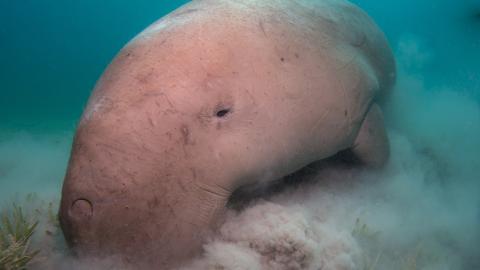Warrior Lawyer Profile: Takaaki Kagohashi
Warrior Lawyer Profile: Takaaki Kagohashi
Jun 7, 2023
Representing Endangered Rabbits and Dugongs
Is environmental litigation similar everywhere, or does it differ wildly? I suggest that it has similar features even in countries with widely diverging legal traditions. Japan’s legal system is a mixture of German and French civil law incorporated in the mid-1800s, with aspects of American common law added during American occupation in 1947, all adapted and localized to Japanese society.
Japan’s modern environmental law movement started in the 1980s and Takaaki (sometimes romanized as Taka’aki) Kagohashi got involved by 1989. Kagohashi, like many environmental lawyers, credits his dedication to environmental protection to a fondness for elements of nature discovered early in life: for Kagohashi, the stars, the diversity of species, and the insects of Japan. Kagohashi is a long-time member and former president of the Japan Environmental Lawyers Federation. Two of his highest profile legal actions dealt with protection for the habitat of the Amami Black Rabbit and the Okinawa Dugong.
Losing in court but winning on the ground
In 1995, Kagohashi was part of the legal team opposing a golf course planned on the isolated island and UNESCO World Heritage site of Amami Oshima. In a bold legal move, the team named some of the threatened species of animals as plaintiffs in their own right. The species that attracted the most attention was the Amami Black Rabbit. Kagohashi and the team also used a specialized approach to standing for the human plaintiffs based on “involvement” (kenkeisei), arguing that the connection the human plaintiffs had built through observing the animals and protecting their habitat granted them legal standing to sue for the protection of the animal. Standing was not granted to the animals themselves, but the “involvement” approach to standing succeeded.
Despite the popular attention, the lawsuit was dismissed in 2001, but the funding for the planned golf course had evaporated and broad public resistance had been stoked by the publicity around the case – and it was not built. The Amami Black Rabbit did not win in court, but it won on the ground, although it remains endangered.
Taking on the U.S. Department of Defence
Kagohashi’s second high profile environmental litigation was the lengthy multi-stage litigation to protect the Okinawa Dugong from the U.S. military in Okinawa Dugong v. Rumsfeld. The Okinawa Dugong’s sea grass grazing habitat was threated by the shift of a U.S. military base. The case was argued in the U.S. under U.S. law, but with a campaign to pressure local Japanese governments as well, as either government could have stopped the base from being moved. The strategy ultimately focused on U.S. law, which offered greater protections for the Okinawa Dugong.

Free to use under Unsplash License.
The U.S. laws included the National Historic Preservation Act and the Endangered Species Act. The lawsuit started in 2003, and won an interim victory with an interlocutory finding that the U.S. had not considered the Okinawa Dugong as required under the National Historic Preservation Act. The U.S. Department of Defence was required to consider the Okinawa Dugong and assess the base relocation’s impact on it. Evidence of the Okinawa Dugong’s habitat was being gathered in 2014.
The U.S. and Japanese governments’ new assessments of the impact of the base on the Okinawa Dugong concluded the impacts were acceptable. The completeness of these reports was subject to further legal challenges. The Okinawa Dugong lost in a lower court decision in 2015, but won an appeal in 2017, before losing in 2018, with the Court finding that the U.S. Government’s “conclusion of no adverse effect was not arbitrary and capricious”. The base is under construction, and by 2019, the Okinawa Dugong population was either critically endangered or extinct. The long-term protest movement on foot and in sea canoes around the proposed base area continues, with a 93-year old protestor commenting "I can hear the footsteps of war."
As Kagohashi has noted, the ultimate result in the Okinawa Dugong case was the opposite of the Amami black rabbit case. In the first he lost in court but protected the animals, and in the second he won in court but the animals were lost. An environmental lawsuit is usually a rallying cry for a society to take action to protect nature, and the real outcome can diverge strangely from the legal outcome.
Comparing Mr. Kagohashi’s experiences with those of environmental lawyers in North America suggests there are features common to environmental protection litigation wherever it takes place: the mundane problems of securing adequate funding for the complex administrative law work it requires, the challenges of obtaining recognition for the environment in law even where there is widespread public support, the inescapable connections between imperial expansion, militarism, and the destruction of endangered species, the overlap between protecting Indigenous cultures with protecting species at risk, and the pride environmental protection work brings to those who engage in it.
- Centre for Law and the Environment

